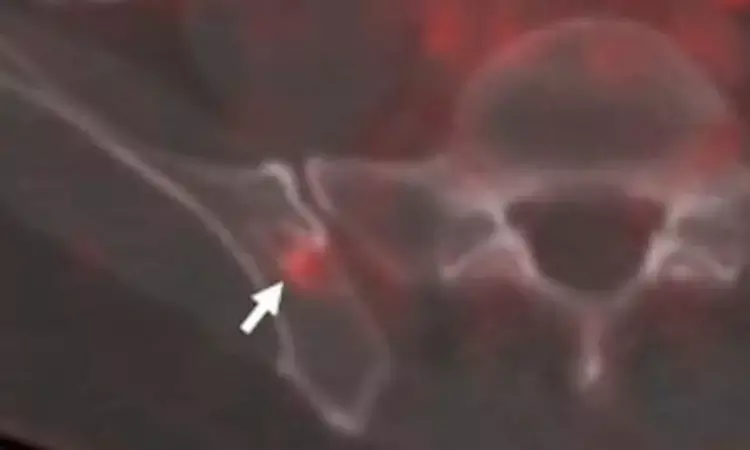- Home
- Medical news & Guidelines
- Anesthesiology
- Cardiology and CTVS
- Critical Care
- Dentistry
- Dermatology
- Diabetes and Endocrinology
- ENT
- Gastroenterology
- Medicine
- Nephrology
- Neurology
- Obstretics-Gynaecology
- Oncology
- Ophthalmology
- Orthopaedics
- Pediatrics-Neonatology
- Psychiatry
- Pulmonology
- Radiology
- Surgery
- Urology
- Laboratory Medicine
- Diet
- Nursing
- Paramedical
- Physiotherapy
- Health news
- Fact Check
- Bone Health Fact Check
- Brain Health Fact Check
- Cancer Related Fact Check
- Child Care Fact Check
- Dental and oral health fact check
- Diabetes and metabolic health fact check
- Diet and Nutrition Fact Check
- Eye and ENT Care Fact Check
- Fitness fact check
- Gut health fact check
- Heart health fact check
- Kidney health fact check
- Medical education fact check
- Men's health fact check
- Respiratory fact check
- Skin and hair care fact check
- Vaccine and Immunization fact check
- Women's health fact check
- AYUSH
- State News
- Andaman and Nicobar Islands
- Andhra Pradesh
- Arunachal Pradesh
- Assam
- Bihar
- Chandigarh
- Chattisgarh
- Dadra and Nagar Haveli
- Daman and Diu
- Delhi
- Goa
- Gujarat
- Haryana
- Himachal Pradesh
- Jammu & Kashmir
- Jharkhand
- Karnataka
- Kerala
- Ladakh
- Lakshadweep
- Madhya Pradesh
- Maharashtra
- Manipur
- Meghalaya
- Mizoram
- Nagaland
- Odisha
- Puducherry
- Punjab
- Rajasthan
- Sikkim
- Tamil Nadu
- Telangana
- Tripura
- Uttar Pradesh
- Uttrakhand
- West Bengal
- Medical Education
- Industry
PET/CT can predict nature of bone lesions as 'benign' or 'malignant' in suspected prostate cancer patients

USA: PET/CT imaging can determine whether prostate cancer lesions that appear to have spread to the patient's bones are malignant or benign, according to research published in the Journal of Nuclear Medicine. The findings could decrease the need for unnecessary biopsies.
"Indeterminate bone lesions (IBLs) on positron emission tomography/computed tomography (PET/CT) scans in prostate cancer patients are common," Tim E Phelps, National Institutes of Health, United States, and colleagues wrote in their study. These lesions currently require biopsy or follow-up imaging for a definitive assessment. But there may be no requirement for these biopsies.
Considering the above, the research group aimed to define variables that determine whether such lesions are likely benign or malignant using features on prostate-specific membrane antigen (PSMA) PET/CT.
For this purpose, the researchers performed 18F-DCFPyL PET/CT imaging on 243 patients having high-risk primary or biochemically recurrent prostate cancer. There was no definitive interpretation of IBLs identified on PSMA PET/CT as benign or malignant. Medical records of IBL patients were reviewed to determine the final status of each lesion.
IBLs were classified as benign or malignant based on evidence of stability or progression at follow-up, respectively, or through biopsy results; IBLs were assigned equivocal in cases of insufficient or unclear evidence. Evaluation of post-hoc patient, lesion, and scan variables was done by accounting for clustered data to determine features that favored malignant or benign interpretation.
The study led to the following findings:
- The researchers identified 98 IBLs within 267 bone lesions (36.7%) in 48/243 patients (19.8%).
- Based on the review, 42/98 IBLs were categorized as malignant, 37/98 IBLs were benign, 8/98 had histological verification, and 19/98 IBLs remained vague.
- Location and maximum standard uptake value (SUVmax) categorical variables were predictive of IBL interpretation.
- For IBLs with new interpretations, 91.9% considered benign showed SUVmax <5 or showed focal uptake without coexisting bone metastases; 88.1% deemed malignant demonstrated SUVmax ≥ five or were present with coexisting bone metastases.
- IBLs with high SUVmax (OR=9.29) or presented with other bone metastases (OR=9.87) were shown to be malignant.
"Indeterminate bone lesions on PET/CT are concerning; however, characterizing their SUV, location, and additional scan findings could be helpful in interpretation," the authors wrote in their study.
IBLs having SUVmax ≥ five coexistent with other bone metastases favor malignancy, but IBLs without bone metastases with SUVmax <5 and observed only in atypical locations prefer benign processes.
"These guidelines may assist in interpreting IBLs on PET/CT," they concluded.
Reference:
Phelps TE, Harmon SA, Mena E, Lindenberg L, Shih JH, Citrin DE, Pinto PA, Wood BJ, Dahut W, Gulley JL, Madan RA, Choyke PL, Turkbey B. Predicting Outcomes of Indeterminate Bone Lesions on 18F-DCFPyL PSMA PET/CT Scans in the Setting of High-Risk Primary or Recurrent Prostate Cancer. J Nucl Med. 2022 Oct 20:jnumed.122.264334. doi: 10.2967/jnumed.122.264334. Epub ahead of print. PMID: 36265908.
Dr Kamal Kant Kohli-MBBS, DTCD- a chest specialist with more than 30 years of practice and a flair for writing clinical articles, Dr Kamal Kant Kohli joined Medical Dialogues as a Chief Editor of Medical News. Besides writing articles, as an editor, he proofreads and verifies all the medical content published on Medical Dialogues including those coming from journals, studies,medical conferences,guidelines etc. Email: drkohli@medicaldialogues.in. Contact no. 011-43720751


